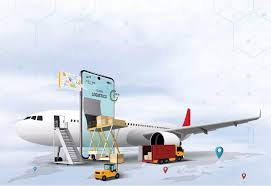The Hidden Price Tag of Modernizing Air Cargo Logistics
When it comes to upgrading the air cargo industry with cutting-edge technology, the financial burden is no small potatoes. The push for innovation brings along a hefty price tag, especially for small and medium enterprises looking to keep pace. Integrating AI, blockchain, and IoT isn’t just about plugging in some new software; it’s a complex, capital-intensive journey that tests both budgets and patience.
Why the Big Investment?
The drive to adopt zaawansowane technologie in air freight is clear: better efficiency, improved traceability, and enhanced customer experiences. However, these gains come with the challenge of substantial upfront costs. It’s not only about purchasing new tech but also about weaving these systems into the fabric of existing operations smoothly. This includes the financial strain of:
- Hardware and software acquisition: AI tools, blockchain frameworks, IoT devices – none of these are cheap.
- Integration expenses: Aligning new solutions with legacy systems often requires custom development and ongoing support.
- Staff training: Preparing your workforce to operate and manage these technologies effectively demands time and resources.
- Cybersecurity measures: Protecting sensitive freight data and network integrity is a continuous, costly endeavor.
Balancing Innovation With Risk in Logistics
One might wonder, why bear such a steep cost if the returns aren’t immediately visible? The truth is, return on investment in tech modernization for air freight is often a slow burn rather than an instant jackpot. While the promise of reduced operational costs, faster shipments, and happier customers is there, it may take months or even years before savings and efficiencies truly shine through.
The Cybersecurity Challenge
As logistics companies integrate more digital tools, cybersecurity isn’t just an add-on—it becomes mission-critical. The freight industry handles tons of sensitive data, from shipment details to customer information, making it a juicy target for cyber threats.
Investing in robust cybersecurity infrastructure is essential, yet costly, and often feels like an ongoing battle rather than a one-time fix. This includes:
- Continuous monitoring and threat detection
- Frequent software updates and patches
- Employee awareness and training to prevent social engineering attacks
- Backup and disaster recovery systems to keep shipments on track
The Small Business Struggle and the Landscape Ahead
For smaller logistics providers, especially MSMEs, these challenges can feel like climbing a steep hill without relief in sight. The capital investment can gobble up budgets faster than anticipated, making it tricky to balance innovation with financial health.
This creates a gap where many players hold back from adopting transformative technologies, potentially missing out on increased operational effectiveness and sustainability. The hesitation reverberates across the industry, slowing overall progress.
| Challenge | Wpływ na logistykę | Potential Solutions |
|---|---|---|
| Wysokie koszty początkowe | Limits tech adoption among smaller players | Phased implementation, shared platforms, financial incentives |
| Complex integration | Operational disruptions and prolonged project timelines | Modular solutions and expert consultation |
| Cybersecurity maintenance | Increased risk of data breaches and shipment delays | Regular audits, staff training, up-to-date tech |
| Slow ROI | Financial uncertainty that deters investment | Clear metrics, pilot projects, stakeholder communication |
Looking Through the Logistics Lens
This tech investment challenge isn’t just a tale within air freight; it shapes the entire logistics sector. Efficient przesyłki towarowe depend increasingly on real-time data, automated processes, and secure information flow. Delays in technology adoption can ripple through the transport, forwarding, and distribution networks globally.
On the flip side, companies that leap this hurdle stand to gain a clear edge. Enhanced tracking, smarter routing, and fortified cybersecurity translate directly into smoother haulage, moving, and international shipping, all vital to global supply chains.
Final Thoughts: Making Smart Moves in an Evolving Landscape
The cost of integrating technology and safeguarding it with strong cybersecurity measures is undeniably high and presents a significant barrier for many in air freight logistics. This reality slows the pace of modernization but also underscores the importance of strategic, well-planned investments.
While financial and operational challenges exist, the drive toward smarter freight solutions remains relentless. The future belongs to those who can balance innovation with risk and budgetary constraints.
Even with the most insightful reviews and honest feedback, nothing quite beats firsthand experience. That’s where platforms like GetTransport.com step into the spotlight. Offering transparent, affordable, and comprehensive global cargo transport solutions, GetTransport.com empowers customers to make well-informed decisions without breaking the bank or encountering surprises. Whether moving offices, delivering bulky freight, or transporting vehicles, this service simplifies the complex world of logistics.
The interplay between technology costs, cybersecurity needs, and logistics efficiency makes for a compelling puzzle. Though these trends might not shake the global logistics landscape overnight, staying updated is crucial. GetTransport.com keeps pace with the evolving world, ensuring your cargo transportation needs are met with convenience and reliability. Zarezerwuj przejazd na GetTransport.com.
Podsumowanie
Integrating advanced technology like AI, blockchain, and IoT into air cargo logistics involves significant investment and challenges—high costs, complex integration, extensive staff training, and essential cybersecurity measures all play a role. These expenses and the delayed return on investment often slow adoption, particularly among smaller logistics firms. However, this integration is critical for enhancing global freight efficiency, transparency, and security across shipment, transport, and forwarding operations. Platforms like GetTransport.com offer practical, cost-effective solutions that ease the burden of logistics management by providing reliable, accessible freight and cargo transport services worldwide. These services bridge the gap between modern technological demands and everyday transport needs, assisting in smoother relocations, deliveries, and global distribution efforts.

 Why Integrating Advanced Technology and Cybersecurity in Air Cargo Logistics Comes at a Steep Cost">
Why Integrating Advanced Technology and Cybersecurity in Air Cargo Logistics Comes at a Steep Cost">